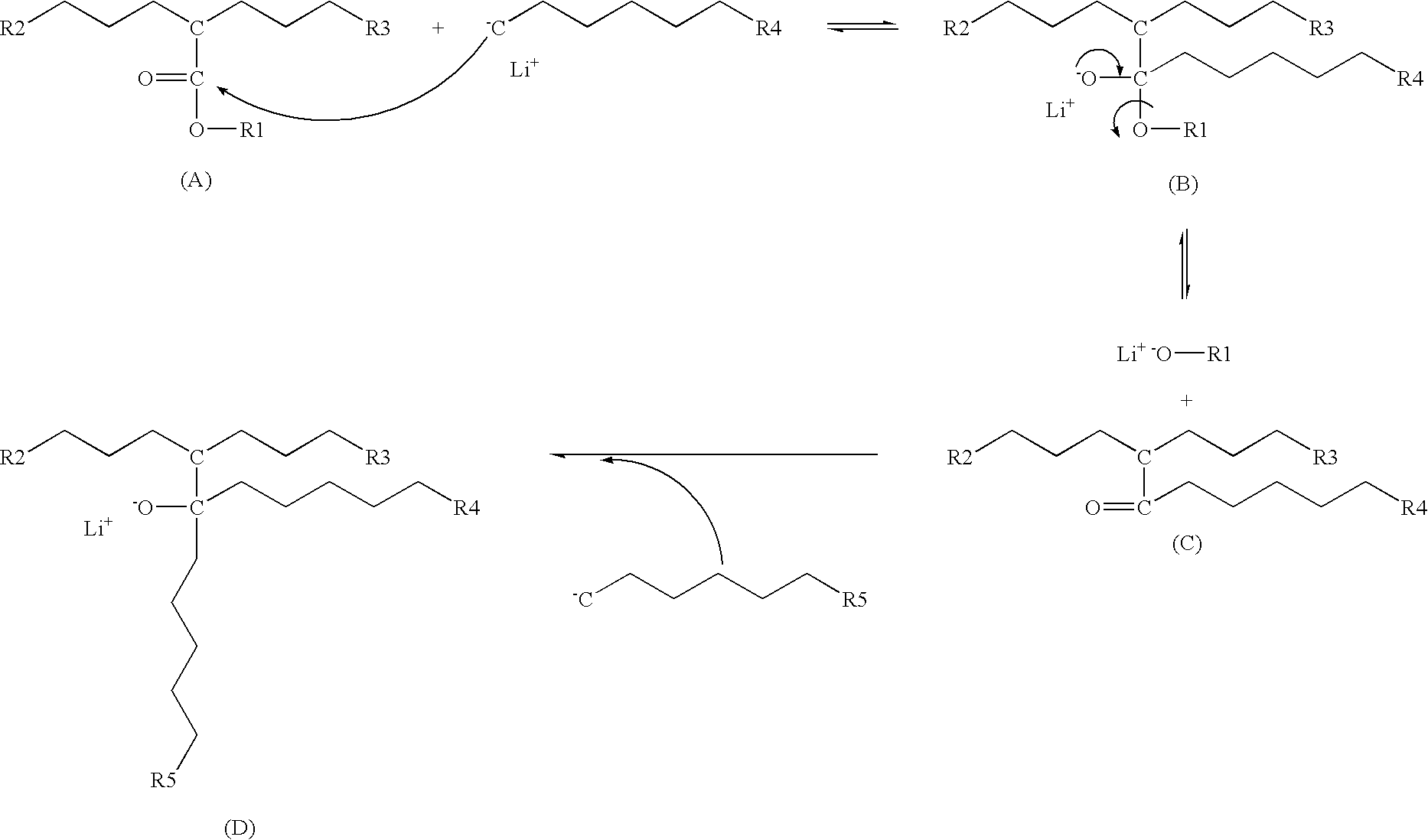Radial multi-block copolymers
a copolymer and multi-block technology, applied in the direction of film/foil adhesives, ways, building components, etc., can solve the problems of undesirable yellowness, poor performance of psa, pma and engineering plastics for certain applications, etc., to avoid yellowness, improve coupling efficiency, excellent mechanical and adhesive properties
- Summary
- Abstract
- Description
- Claims
- Application Information
AI Technical Summary
Benefits of technology
Problems solved by technology
Method used
Image
Examples
example 1
[0058]An adiabatic batch tank reactor with 2 liters of capacity, having a propeller agitator working at 145 rpm, was adapted to carry out anionic polymerization in an inert atmosphere (nitrogen gas) using 560 grams of a preferred solvent (cyclohexane), 22 grams of styrene monomer, 8 grams of p-methylstyrene monomer, and 7.5 mg of N,N,N′,N′-tetramethylethylene diamine (TMEDA). After heating to a reaction temperature of 75° C., 0.1478 grams of n-butyl lithium was added into the reactor under continued stirring at 145 rpm. A residence time of around ten minutes was allowed to ensure the consumption of both monomers to form A1A2 blocks. After that, 70 grams of 1,3-butadiene monomer were slowly added into the system to make a soft B2 block. At 90% of the total quantity of 1,3-butadiene monomer, 1.1868 grams of triethylaluminum (TEA) at a molar ratio TEA:Lithium of 4.5:1 were added at around 102° C. while the remaining amount of the 1,3-butadiene monomer was allowed to feed continuously i...
example 2
[0059]An adiabatic batch tank reactor with 2 liters of capacity, having a propeller agitator working at 145 rpm, was adapted to carry out anionic polymerization in an inert atmosphere (nitrogen gas) using 470 grams of a preferred solvent (cyclohexane), 22 grams of styrene monomer, 8 grams of p-methylstyrene monomer, and 7.6 mg of TMEDA. After heating to a reaction temperature of 75° C., 0.1281 grams of n-butyl lithium was added into the reactor under continued stirring at 145 rpm. A residence time of around ten minutes was allowed to ensure the consumption of both monomers to form A1A2 blocks. After that, 70 grams of 1,3-butadiene monomer were slowly added into the system to make a soft B2 block, however, at 90% of the total quantity of 1,3-butadiene monomer, 1.028 grams of triethylaluminum (TEA) at a molar ratio TEA:Lithium of 4.5:1 were added at around 103° C. while the remaining amount of the conjugated vinyl monomer was allowed to feed continuously into the reactor. After six mi...
example 3
[0060]The same procedure was followed as in Example 1, except 1.0549 grams of TEA were used at a molar ratio TEA:Lithium of 4.0:1 and were added at around 99° C. Main characteristics of Example 3 are given in Table 1.
PUM
| Property | Measurement | Unit |
|---|---|---|
| Efficiency | aaaaa | aaaaa |
| Molar mass | aaaaa | aaaaa |
| Molar mass | aaaaa | aaaaa |
Abstract
Description
Claims
Application Information
 Login to View More
Login to View More - R&D
- Intellectual Property
- Life Sciences
- Materials
- Tech Scout
- Unparalleled Data Quality
- Higher Quality Content
- 60% Fewer Hallucinations
Browse by: Latest US Patents, China's latest patents, Technical Efficacy Thesaurus, Application Domain, Technology Topic, Popular Technical Reports.
© 2025 PatSnap. All rights reserved.Legal|Privacy policy|Modern Slavery Act Transparency Statement|Sitemap|About US| Contact US: help@patsnap.com

